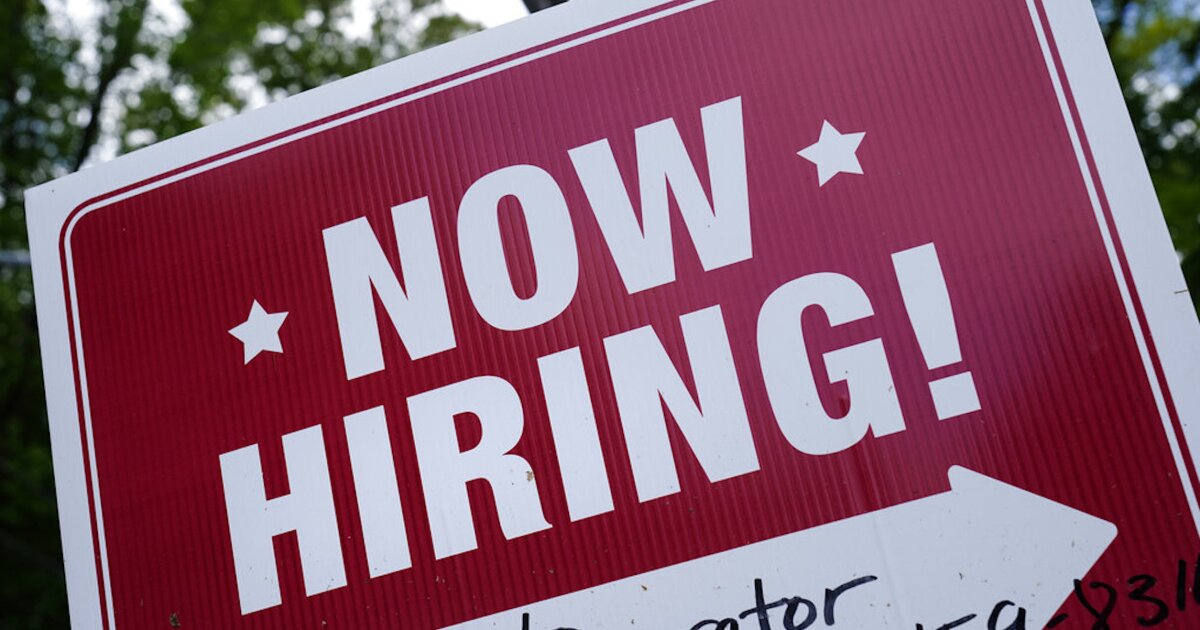

The labor market showed resiliency in April despite the Federal Reserve driving up interest rates in an attempt to stave off inflation
.
The number of job openings in April was at 11.4 million, near record levels, according to a report released on Wednesday by the Bureau of Labor Statistics
. The previous record number of job openings was notched in March, which was upwardly revised this week to 11.9 million.
The hot numbers come as the Federal Reserve begins jacking up interest rates and tightening its monetary policy to combat blistering inflation. The central bank increased rates by a quarter percentage point in March and then took the even more aggressive step of hiking rates by a half percentage point in May.
The Fed action is designed to slow spending and drive down prices. Some economists have complained that the Fed isn’t moving fast enough and point to hot spots in the economy, such as Wednesday’s report, as evidence.
‘DIFFICULT TIME’: WHITE HOUSE BLAMES INFLATION ON EVERYTHING BUT BIDEN’S POLICIES
“Too many jobs, too much opportunity for Americans to better their lives this month, so Fed officials will have to aim their anti-inflation measures better in order to achieve an economic slowdown,” said Chris Rupkey, chief economist at FWDBONDS.
Wednesday’s report also showed that the rate of people quitting their jobs was little changed from the month before.
Layoffs fell to a record low of 1.2 million, which shows that employers are desperate to hang on to workers in the tight labor market environment.
“As companies try to retain workers, they are also loath to let them go; the layoff rate was at a series low in April,” said Indeed Hiring Lab Director of Economic Research Nick Bunker. “Workers are having their moment in the sun, but some clouds are likely to come along and darken the outlook.”
The largest increases in job openings were in transportation, warehousing, utilities, and the manufacturing sector. The largest decreases in openings were in healthcare, retail trade, and accommodation and food services.
The report comes after the economy beat expectations and added 428,000 jobs last month, a further sign that the labor market is still strong despite the bruising inflation and a contraction of gross domestic product in the first quarter.
Some economists fear the Fed will knock the economy into a recession, although most forecasters predict that the second quarter of this year will see robust growth, although many have revised down their forecast of GDP growth as of late.
The Biden administration is shouldering much of the blame for the high inflation, despite the Fed’s leading role in price stability. President Joe Biden’s approval rating has taken a massive hit as people struggle with affordability, especially at the grocery store and the gas station.
Consumer prices increased 8.3% in the 12 months ending in April, near the fastest rate since 1981. Gas prices, which are also being driven up by supply problems stemming from the Russian war in Ukraine, have lurched to record highs over the past few months.
The average price for a gallon of gas is now a whopping $4.67 nationwide, according to AAA. That is up about 50 cents from a month ago and $1.62 more than it was this time last year.
CLICK HERE TO READ MORE FROM THE WASHINGTON EXAMINER
Biden launched a renewed effort this week to signal to the public that he is addressing inflation. He convened a rare meeting with Fed Chairman Jerome Powell, with Treasury Secretary Janet Yellen on hand, on Tuesday to discuss the soaring prices.
The meeting was preempted by a Biden op-ed placed in the Wall Street Journal emphasizing the central bank’s independence and leading role in controlling inflation. The meeting featured a discussion about the current state of the U.S. and global economy and how to address the country’s breakneck inflation.




